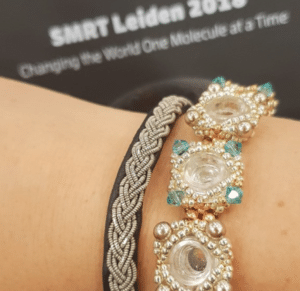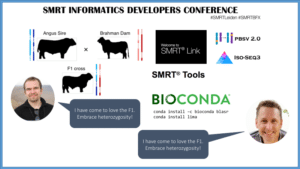
When was the last time you sent your DNA off to a day at the spa? Olga Pettersson of the SciLifeLab at Uppsala University lets her molecules relax for up to a week at room temperature to enable them to untangle, achieve better chemical purity, and better sequencing output.
It was one of many practical pointers shared by presenters at the popular three-day gathering of PacBio users in Leiden, Netherlands last month. SMRT Leiden featured the scientific discoveries and analytical achievements of more than 30 speakers.
Inge Kjaerbolling of the Technical University of Denmark shared her tricks using the new Aspergillus genomes for linking compounds to metabolite clusters. Zev Kronenberg, whose name recently graced Science for the cover story on the great apes comparative genome, discussed some of the tools he has developed in his new role as a Phase Genomics scientist: Polar Star for breaking chimeric PacBio contigs using Hi-C; Matlock for Hi-C data pre-processing; and FALCON-Phase, a method for using Hi-C to scaffold FALCON-Unzipped PacBio genomes.
Day 1 also featured several scientific talks about large genome projects, including: the Bat1K initiative from Sonja Vernes of the Max Planck Institute; the genome sequencing of the Zika carrier, the Aedes aegypti mosquito, from Rockefeller University’s Ben Matthews; the tomato genome project, from Mohamed Zouine of INRA/INP Toulouse; and the maize genome from Doreen Ware of USDA/Cold Spring Harbor, who prophesied: “The next green revolution will be data driven.”
Day 2 kicked off with a densely packed and awe-inspiring keynote talk by Shinichi Morishita of the University of Tokyo, covering topics with implications for human disease, speciation, structural variants, haplotype phasing, and metagenomics. It was followed by a talk from Laurence Ettwiller of New England Biolabs on a new full-length transcriptome protocol for bacteria, as well as a preview of the forthcoming version of structural variation calling in PacBio’s official SMRT Link/SMRT Analysis software suite, by PacBio scientist Armin Töpfer.
Human disease was the topic of several other presentations. Stuart Scott from the Icahn School of Medicine in New York explained how he uses SMRT Sequencing to identify and phase variants important for human disease mutations. Marjolein Weerts from Erasmus MC, Netherlands, presented her work on inferring cancer signatures on the basis of low-frequency mitochondrial DNA (mtDNA) circulating in the blood stream. And Birgitt Schuele of the Parkinson’s Institute discussed her latest publication that applied PacBio’s No-Amp method to sequence repeat expansions in the ATXN10 gene.
Dutch scientists Alex Hoischen and Yahya Anvar discussed additional applications in human genetics and precision medicine, and Martin Pollard of the Sanger Institute delved into population genomics, describing an effort to generate an expanded reference panel of MHC haplotypes from African populations.

The third day of the event was the SMRT Informatics Developers Conference, which featured a mixture of bioinformatics talks and open discussion. Speakers went into depth about de novo assembly, structural variation, amplicon sequencing, and PacBio’s Iso-Seq method for sequencing full-length RNA transcripts.
Sergey Koren’s talk about TrioBinning, an new approach for complete haplotype reconstruction, was especially popular, and David Heller (Max Planck) illustrated his graph-based approach, SVIM, for calling structural variants using long reads.
For in-depth coverage of the event, check out the four-part Medium series by PacBio Scientist Liz Tseng: